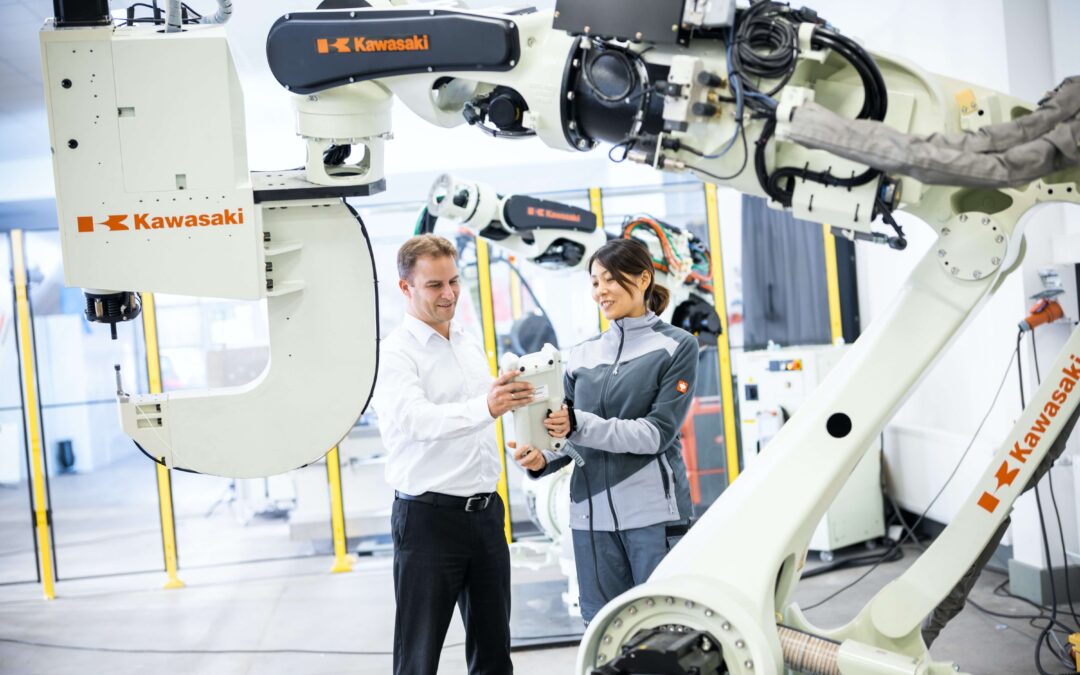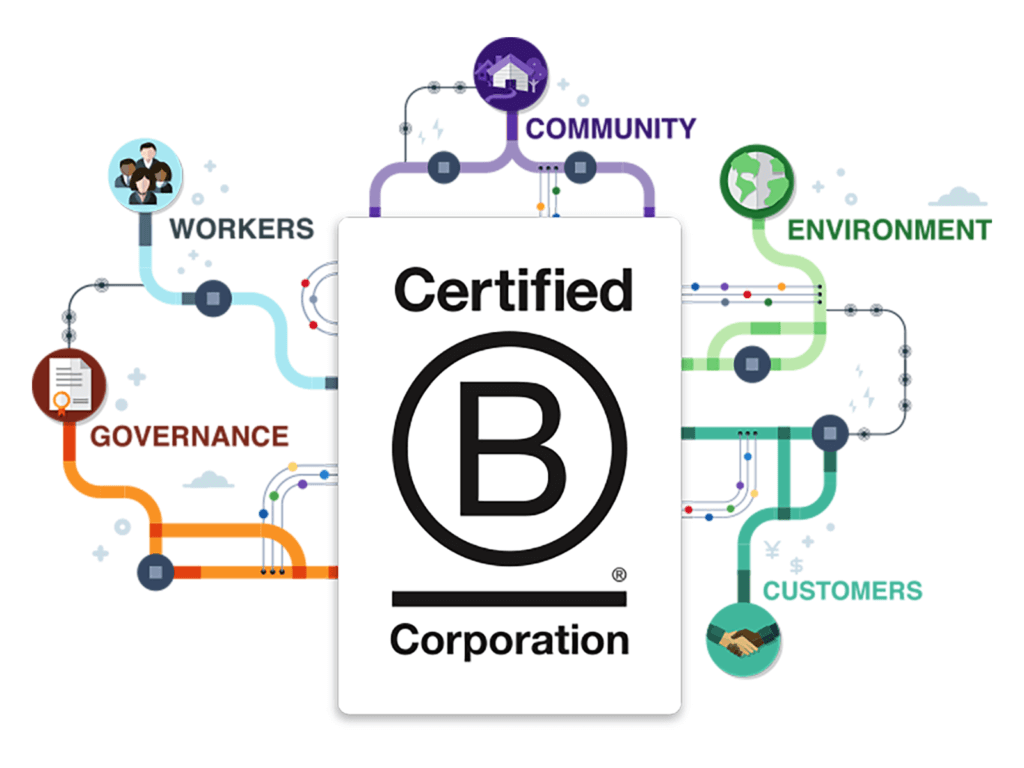To learn more about B Corps, visit bcorporation.net.

What’s the best process to manage growth for manufacturing companies?
What’s the best process to manage growth for manufacturing companies?
For growing manufacturing companies, the most important strategic questions are around how to allocate resources, optimize the use of their assets and where to invest in advance of demand to support growth. This is an important question for all companies, but it’s especially critical when you have invested a significant amount of money in high-dollar facilities and equipment along with people who have specialized skills that take time to develop. With a relatively fixed capacity in the near term, decisions need to be made on what products to make and how best to sequence the work to maximize the use of limited resources to meet the demand for products that will be delivered months—if not years—in the future.
One widely used and proven approach to address this is Sales, Inventory and Operations Planning (SIOP) or Sales & Operations (S&OP) Planning. The two processes are one in the same, but inventory is sometimes called out because of its importance to buffer supply and demand variation and the importance of managing inventory levels due to its impact on cash flow. SIOP is a type of management operating system that focuses on aligning all aspects of the business to one future plan that allows teams to orchestrate and align daily activities.

Prior to incorporating SIOP, many businesses faced challenges that included sales teams being unsure of what to sell because they didn’t know what products would be available; operations teams making their best guess on what to make, often prioritizing operational efficiencies and historical run rates to make those decisions; and financial leaders setting targets based on past deliveries and a relatively arbitrary challenge to grow by a certain percent. As the saying goes, if you’re doing what you’ve always done, you should expect to get the same results—and that is not what a growing company is looking for. Companies that have relatively stable demand, shorter product lead times, and modest growth can sometimes get by this way, but for a company with double-digit growth expectations, the lack of orchestrated planning can mean lost sales, unhappy customers and a lot of the wrong parts on the shelf.
As I’ve seen with high-functioning SIOP processes at large manufacturers such as Honeywell, and deployed them at services and distribution businesses at Boeing, there are solutions that can turn those growth challenges into competitive differentiators, and a robust SIOP process is at the heart of it.
The starting point is extending the business planning horizon beyond the lead time needed to manufacture products and add capacity through investment decisions such as bringing on new people or purchasing equipment. This is typically 18-24 months in the future but can vary depending on the type of business. Extending the planning horizon allows sales and marketing to build campaign strategies, operations to scale capacity by addressing bottlenecks, and supply chain to effectively source and procure parts at the best cost. The challenge then becomes how to forecast demand that far out with all the variability and uncertainty that comes into play around changing market conditions and customer buying patterns, new competitors and any socio-economic business cycles that may impact your business. This is where advances in data analysis along with cross-functional collaboration become critical.

A term used by many supply chain professionals that encompasses this process is Collaborative Planning, Forecasting and Replenishment (CPFR). CPFR or a similar process is the first building block for SIOP. The process starts by mining sales data by product, customer, region and other relevant factors, and then analyzing to identify trends, applying market indicators that may be impacting future demand for your products and comparing with other competitive or complementary products to understand any correlations. There are systems and tools that can help with this along with forecasting techniques that allow for scenario planning that incorporate different future possibilities. Once product level scenarios are laid out, there’s typically a weekly or monthly meeting that brings together the sales and marketing team, customer service, and anyone on the front lines who can bring market, customer and competitive insights to the conversation to debate and agree upon a consensus forecast to plan to. Although the planning horizon may be 18-24 months, there are typically planning windows where different levels of decisions are made. For example, decisions to add capacity may be 12-18 months out while the specific product manufacturing schedules may be locked in during a 4- to 6-week window to allow for more flexibility beyond that.
The one thing we know about that forecast is that it will be wrong. But by setting a long-term plan that everyone can work to, you establish a baseline to get better over time by addressing forecast errors, understanding how different variables impact your numbers and getting everyone aligned on the product mix so your team can work efficiently on one plan. Sales and marketing can sell what’s planned, operations can build what’s planned, supply chain can buy the right material and the finance team can model cash and forecast financial results.
Now back to inventory. Inventory comes into play to help buffer demand uncertainty that we know is there and keep that uncertainty from disrupting operations and supply chain.
Although inventory does tie up assets, it can be managed to optimize flow, increase resource utilization, and allow for strategic sourcing of material to lower costs. With the right inventory buffers in place and visibility across the organization, you can optimize your business to run much more efficiently with the results showing through fewer material shortages, improved on-time delivery, higher equipment utilization, and increased sales because you have the right products there to fulfill it. A common issue I see at companies that don’t run SIOP is plenty of inventory on the shelf, but all the wrong parts, which ties up cash and doesn’t allow for investment in the right parts.

The second core building block of SIOP is the operations plan. Operations teams often manage complex product flows that tie together buying material, manufacturing components and assembling end items for sale in a multi-step process that takes weeks or months to complete. There are many ways to optimize this process incorporating lean manufacturing techniques that include minimizing machine setup and changeover where different parts run across the same equipment, minimizing travel distance by optimizing facility layouts and assuring first-time quality with no rework cycles along with many other approaches. Many improvements can be identified and managed with key metrics in place to monitor processes, encourage daily collaboration across teams and promote consistent communication. However, everything starts with a long-term plan and knowing which products to make.
The heart of SIOP is the monthly or sometimes weekly collaboration between sales and operations to review the forecast, discuss different sales scenarios, identify potential operational bottlenecks and then agree to a plan that allows everyone to align by incorporating the best information available. This becomes an iterative process that runs each month and allows teams to continuously learn, refine how they work together to meet the needs of a growing business and communicate through a systemic process to address issues and opportunities that come up.

The final building block, the finance plan, may be the most important for growing companies. The biggest challenge I’ve seen leading through multiple cycles of boom and bust in aerospace over the last two decades is the inability or unwillingness for manufacturers to invest ahead of demand to support growth. There’s a good reason for this since making the wrong decision for a company that may already have financial challenges can be detrimental.
But the companies that are ultimately successful during growth cycles—capturing market share, driving financial performance and delighting customers—are the ones that make the right bets and are there to meet the needs of the growing market. And although luck can sometimes play a part, the process behind those companies most of the time is SIOP. It allows them to manage costs and assets more efficiently, provides the funding and cash flow for growth, gives the finance team more confidence to make the decision to invest, and enables the sales and marketing teams to build a more strategic relationship with customers by talking more about where they’re going rather than where they’ve been.
The case for SIOP or a similar process is strong, with proven results and many systems and tools that can help make it easier to deploy today. So why don’t more companies use it? The biggest reason that comes up continuously is that it requires change across many functions, and change is hard. It requires the sales team to look further out into the future and make estimates based on the unknown rather than selling what’s in front of them today; it requires the operations team to manage to a longer term, more dynamic plan that could require them to shift resources and continuously innovate and improve to lower lead times and cost; it requires the entire organization to share data more transparently; and it requires a commitment from everyone to one plan.
It takes time, going head-first into difficult conversations about trade-offs and redefining processes, but in the end it’s by far the most effective way I’ve seen companies align to support growth. And the rewards for everyone include the increasing opportunities that a growing company provides, a clearer understanding of how everyone contributes to a common goal, and a culture of continuous improvement that empowers decisions and actions across many teams that now know the plan.
Image credits: Unsplash.com







